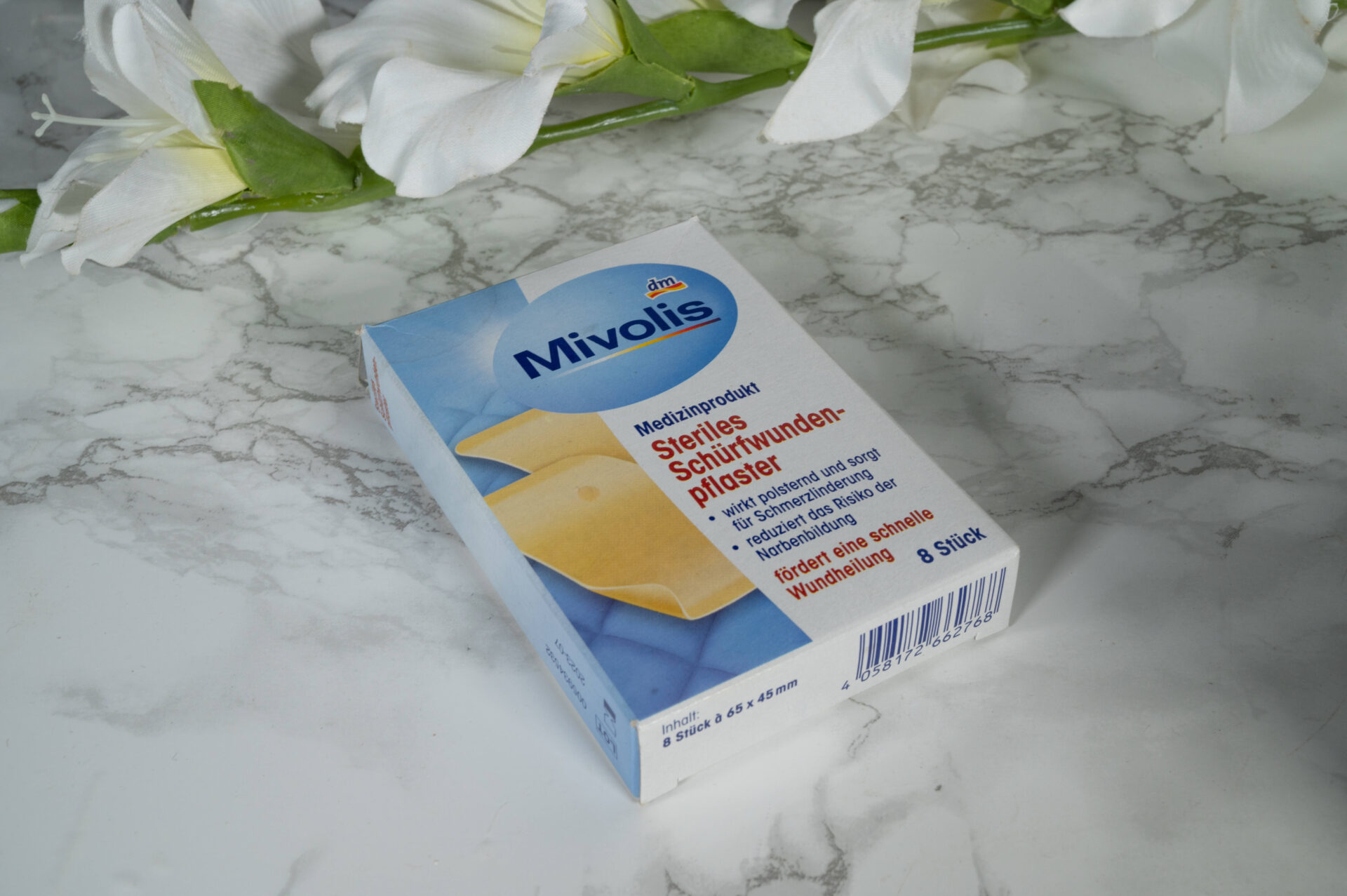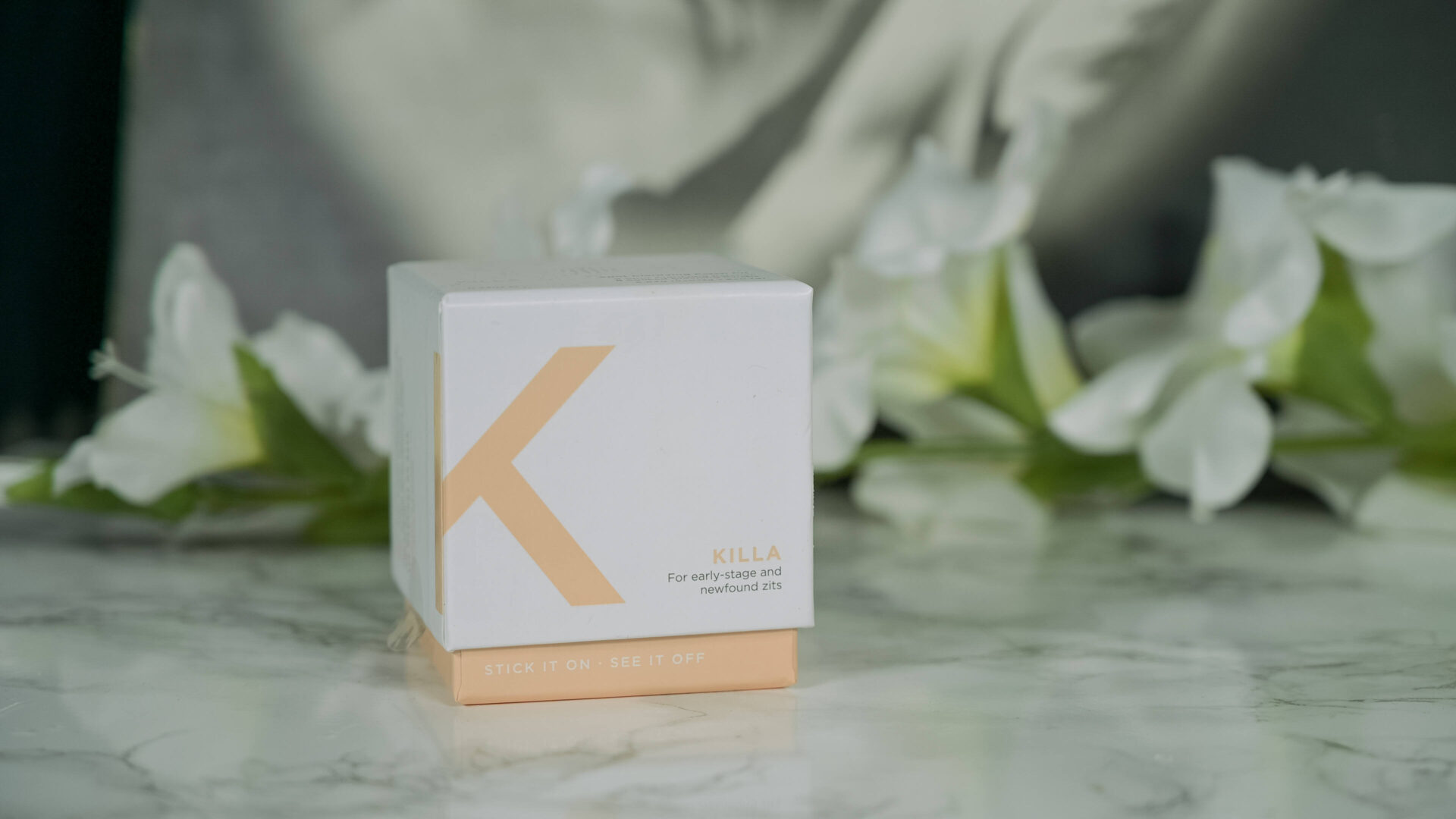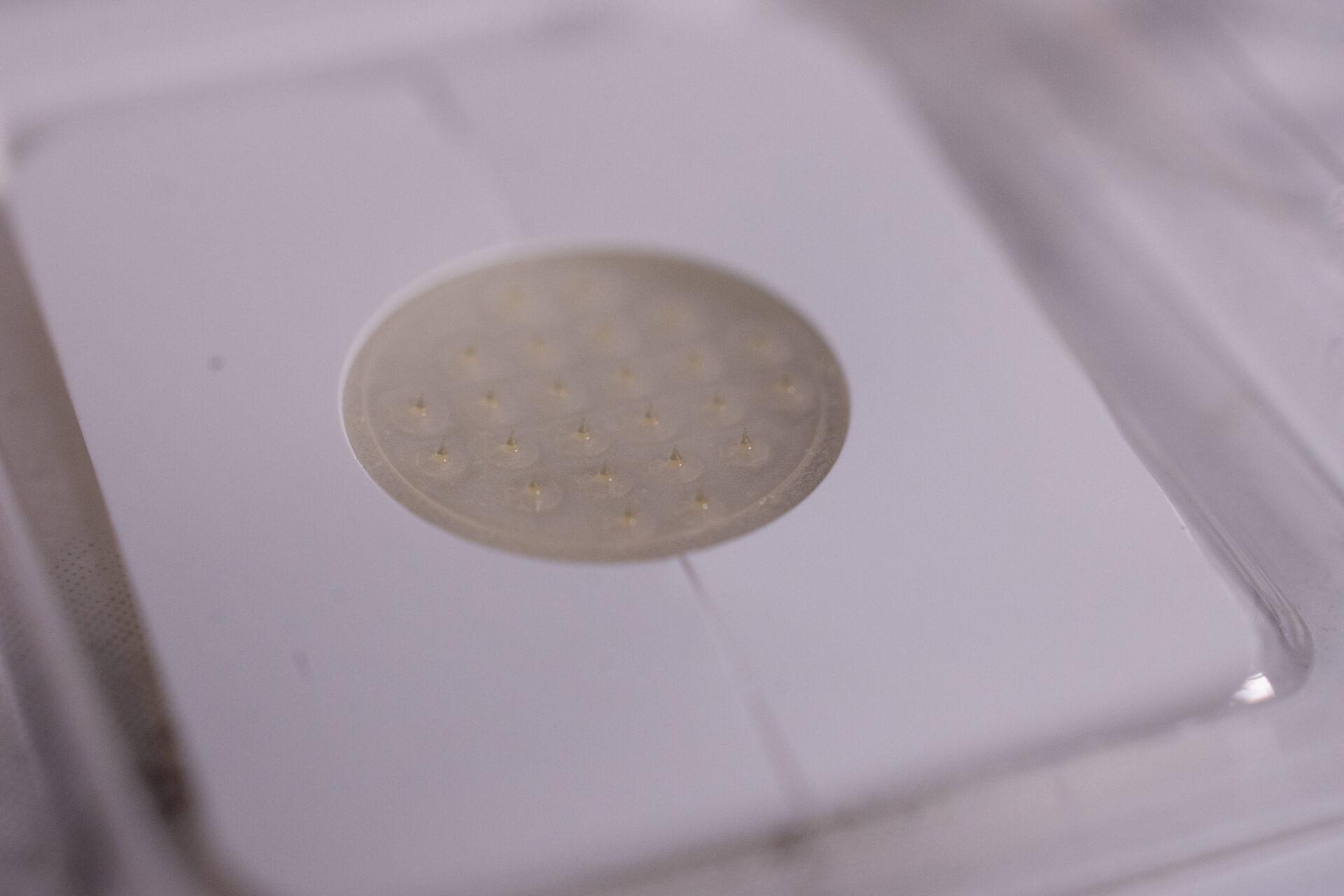This blog post uses affiliate links. I did not receive any money to write it. Please read disclaimer.
In my recent post about Hyaluronic Acid I talked about the benefits of moist wound healing and the role that acne patches might play in improved wound healing and acne scar prevention.
Little did I know that when you look for the terms “hydrocolloid patches” and “acne” on YouTube, you will find numerous compilations of TikTok videos that suggest BandAid as acne treatment. Just as a reminder: I am old, I don´t do TikTok, I had no clue that was a thing.
But I do know a thing or two about the different types of acne patches – hydrocolloid, acne treatment and microneedles – and I also have some opinions about that BandAid TikTok thing!

Why the TikTok Band Aid trend might be problematic
Now, the TikTok videos.
First: The amount of serious acne and scarring I have seen in these clips is huge, and while I fully and wholeheartedly support the #realskin trend on social media normalizing breakouts, pores and the likes, I have an important message for you:
If you suffer from acne, go see a doctor – do NOT turn to TikTok or YouTube for advice!
And before anyone comments that not everyone wants to treat their acne and that some people fully embrace it – if that is you, that is perfect, you do you. But I highly doubt that people uploading or watching clips titled “Miracle Treatment for acne” belong to that category. Postponing sufficient treatment can lead to irreversible scarring that might affect your mental health for life, this is nothing to take lightly.
And second: Not all hydrocolloid bandages are created equal – I will go into that later. And while there are very cheap options, I will share my personal favorite below, the ones that are hard and painful to remove because they stick so well to the skin are probably not what you would want to pick. Ripping the surface layer of your skin off is never a good idea, even less if you have active acne underneath it.
With that being said, let’s talk about the different types there are.
Hydrocolloid Patches
These have been used as wound dressing for a long time already, but mainly on chronic wounds like pressure ulcers or in the treatment of burns. With the increasing interest in scar free healing, especially after cosmetic procedures, they gained more traction and were investigated in different studies for their performance on other skin issues, acne included. But while technically now they “have been studied and found to work for acne”, it is not that easy – the studies haven’t all been done on humans and if they have, there were small numbers included and, and this is the main takeaway here: They have been studied on hydrocolloid infused with medication like antibiotics, Triclosan or other acne-fighting ingredients.
So as it often is with skincare: promising results, but more research is needed.
But why would they be beneficial in the first place? If you look at how they are made, they do have a plastic layer, then the hydrocolloid or hydrogel part and then an adhesive to make it stick to the skin. The hydrogel is water absorbent and is made by crosslinking different polymers, both natural and synthetic. The kind of polymer used determines the properties of the material, which makes them an excellent carrier for several drugs whose release can be activated by things like pH change, temperature change and similar.
If we talk about basic hydrocolloid patches though, they are not used to deliver any active substances. Their main benefit is to provide a moist environment by reducing Transepidermal Water Loss, to absorb secretion and pus and to protect the wound from mechanical irritation like your picking fingers – the latter probably being the most important. Oh, and while we are on the topic of absorbing fluids – when the fluid is absorbed into the hydrocolloid membrane, that one turns white. So if you wake up and the patch you put on top of your pimple has gone all white, this is not an “oh, gross, look at all that pus!” moment, no matter how good these apparently perform on TikTok.
In order to get these effects, the patches should be worn for as long as possible. Every time you remove them, chances are you disturb the layer of new skin that is forming underneath. I recommend at least 8 hours, preferably overnight or, as I like to do when I know I will be covering my face with a mask anyway, even for the following day. Once the patch no longer sticks properly or dirt and fluid has accumulated underneath, it is of course time to change it.
Oh, and I forgot to mention that they are of course used after skin cleansing. I mean, you can stick them on on top of makeup, but that would trap the dirt and pigment under an occlusive layer, which I can imagine will not be very helpful for a smooth healing process.

Acne treatment patches
Now if you infuse a hydrocolloid patch with acne fighting ingredients, salicylic acid and tea tree oil being the most common ones, you get an acne treatment patch. Many of them are slimmer than the hydrocolloid patches, as their aim is not so much fluid absorption, but ingredient delivery.
After cleansing your skin, you put these on the zit and let them release the acne-fighting ingredient over time. The benefit of those as opposed to a serum is that they have an occlusive layer, which will make sure that the product doesn’t evaporate – it can only go into the skin, as it is sealed under plastic, and that they provide the product from migrating around your face or being rubbed off when you touch it.
You can of course also mimic the effect by applying your for example salicylic acid serum and then sticking a hydrocolloid patch on top, but as it is often the case, DIY has some pitfalls – if your skin is too wet, the patch will slide around, if you wait too long, chances are some has already evaporated and, especially important if you plan on using something other than salicylic acid, your benzoyl peroxide for example: Trapping something underneath an occlusive layer will increase the effect for above mentioned reasons. It might also increase the irritating potential though, which is not what we want in an already inflamed area.
As our skin is designed to be a barrier, it still can be hard for these ingredients to get where they need to go to work.

Microneedle patches
Microneedle patches are basically hydrocolloid patches, but with tiny darts infused with active ingredients underneath that puncture the surface of the skin and then dissolve, releasing whatever they contain slightly deeper into the skin. Only slightly though, the darts aren’t long, and no, they don´t hurt when you apply them. Once they are dissolved, the benefits you get are the same that you have with other acne patches.
Just to be clear, there is even less studies done on microneedles than there is on other types of acne patches, I could find only one from late 2020 that was looking at the effect on inflamed mouse ears.
But the concept is intriguing and I personally have seen results that convince me. I tend to save them for bad zits that have almost come to the surface, as the deep set cystic ones are usually not affected by them and the regular whiteheads – well, the microneedle patches are expensive, so I don’t use them as liberally as I use others.
They also come with a lot of extra packaging because their darts are easily damageable and should, even more than others, only be used on clean skin. The ones I have, which are from Killa, come with a disinfectant wipe to use before (it also contains tea tree oil, which I don’t particularly like), but you could of course also use some alcohol dabbed on the surface before pressing them on – any dirt or bacteria living on the skin’s surface will be pressed deeper into the skin through the tiny holes created, so cleanliness is mandatory. Oh, and for the exact same reason I would refrain from “enhancing” their effect by applying another active underneath: Not all things are meant to go beneath the skin’s surface, you could trigger some adverse reactions that way.

Overview and my favorite acne patches
So to summarize: Patches will not prevent acne from forming, they are a way of treating already existing breakouts.
The hydrocolloid version is the most affordable one and best used on whiteheads or already popped pimples. They should be worn for at least six hours, but the longer the better to give the wound underneath time to heal. You can buy them as preformed circular patches, but my preferred alternative are these by Mivolis that I get at DM, a german drugstore, for around 3 €. They are a little thicker than the ones for the face you can buy, but I don´t mind that. I cut them up to the size I need and, always a bonus if you have small children, also use them for their original purpose, which is to cover grazed knees and elbows. What is key with these though, going back to my intro about the TikTok hacks I had seen, ist that they stay put on the skin, but after 12 hours can easily be peeled off without any pain or irritation. You really don’t want to rip off your surface layer!
For active lesions that haven’t been popped yet or that still have a lot of inflammation surrounding them, acne treatment patches might be a good option, as they deliver a potent dose of acne fighting ingredient right on the spot (pun intended). Their main benefit though if you are anything like me is that similar to the regular patches – they stop you from constantly touching and picking. I don’t have a favorite brand here and don’t actually have any in my stash right now, but there are different options that to be honest all work equally well.
And lastly for these angry, right beneath the surface zits that at least on my face occur around once a month, microneedle patches are a good option. They don’t make the spot disappear overnight, but they do reduce it in size and inflammation, which for me is worth the extra money. I have the Killa Zit Sticka, but there are other brands that produce them as well. Interestingly enough microneedle patches are not only used to treat acne, but are also available for the eye area, where they are loaded with Hyaluronic Acid, or to treat post inflammatory hyperpigmentation, infused with Niacinamide.



